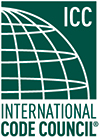Note: The following letter was sent to every member of the U.S. House of Representatives by Rep. Mario Diaz-Balart from Florida's 25th Congressional District.
Dear Colleague:
As hurricane season begins this year, it is important for lawmakers to know what Congress can do to make America better prepared to respond to natural disasters. Weather experts are predicting there will be three to five hurricane events in 2014.
As a representative from a hurricane-prone state, I am committed to improving our nation's ability to withstand the impact of natural disasters. Tomorrow, I am participating in an issue forum sponsored by Florida International University at the National Building Museum to discuss state and local policies that can make our communities more resilient. This event is being cosponsored by the BuildStrong Coalition, which is playing a vital role in promoting common sense solutions to protect property, save lives and ultimately reduce taxpayer exposure to natural disasters.
I encourage you to visit www.buildstrongamerica.com to review the information this stakeholder group is providing on the importance of disaster mitigation, particularly their work to promote strong building codes as a means to better fortify the nation's defenses against natural disasters. Click here to watch a short highlight video of the BuildStrong Coalition and its accomplishments over the years.
Since 1980, natural disasters have cost the United States more than $1 trillion in economic losses with hurricanes being responsible for the vast majority of the costs. But not just coastal states are impacted. In this time frame, there have been 151 natural disaster events that exceeded $1 billion.
I would like to bring to your attention four bills that can serve as the foundation of Natural Disaster Mitigation Strategy. I hope you can join me in supporting them. The BuildStrong Coalition recently ran an ad in Politico and the Hill Newspaper promoting these four pieces of legislation.
The Safe Building Code Incentive Act of 2013 (H.R. 1878) — I introduced this bill along with Rep. Albio Sires of New Jersey. This bipartisan piece of legislation would provide states that adopt and enforce strong building codes with an additional four percent of post-disaster grants. This legislation has broad support among first responders and emergency management experts.
The Disaster Savings Account Act (H.R. 3989 & S. 1991) — Introduced by Rep. Dennis Ross (R-FL-15), Sen. James Inhofe (R-OK) and Sen. Mark Begich (D-AK), this bipartisan bill provides a $5,000 tax deduction for money deposited into a savings account to offset disaster mitigation costs.
The Disaster Savings and Resilient Construction Act of 2013 (H.R. 2241) — This is another bill I have introduced to provide tax credits to homeowners and contractors who utilize modern building science when constructing and/or renovating homes and buildings.
The National Windstorm Impact Reduction Act Reauthorization of 2013 (H.R. 1786) — Introduced by Rep. Randy Neugebauer (R-TX-19), this bill authorizes funding for increased research into reducing the economic and human toll of windstorms.
We know Mother Nature is going to strike again. In previous years, Congress has responded by passing costly supplemental appropriation bills. While it is our obligation to help communities rebuild from major disasters, we need to think proactively about the steps we can take to reduce the taxpayer costs associated with natural disasters. By promoting disaster mitigation efforts such as those contained in the above-mentioned bills, we will be doing taxpayers, homeowners and small businesses a great service.
Sincerely,
Mario Diaz-Balart
Member of Congress
